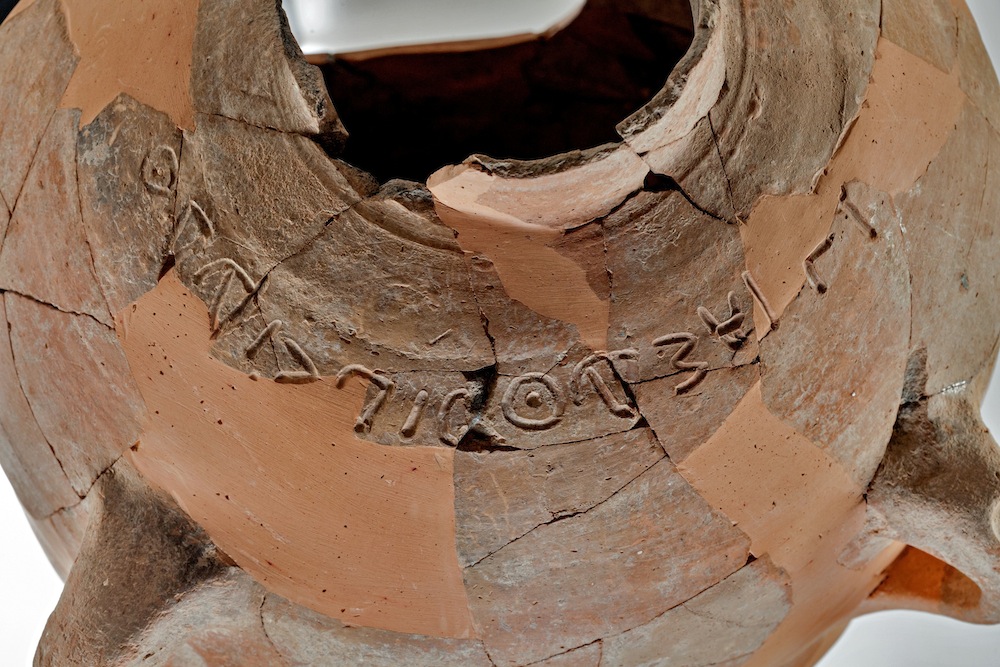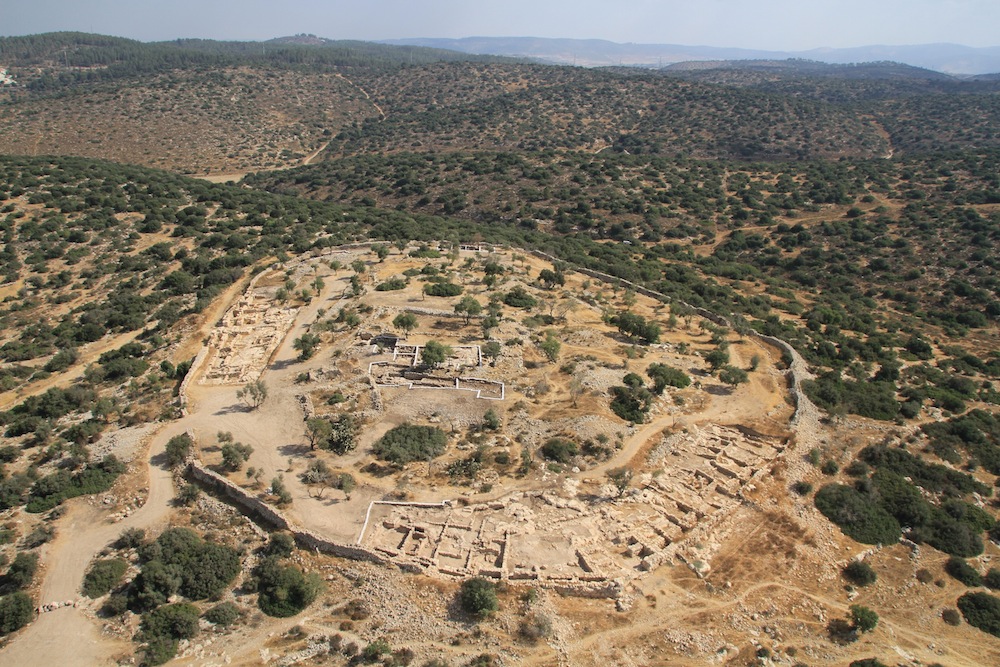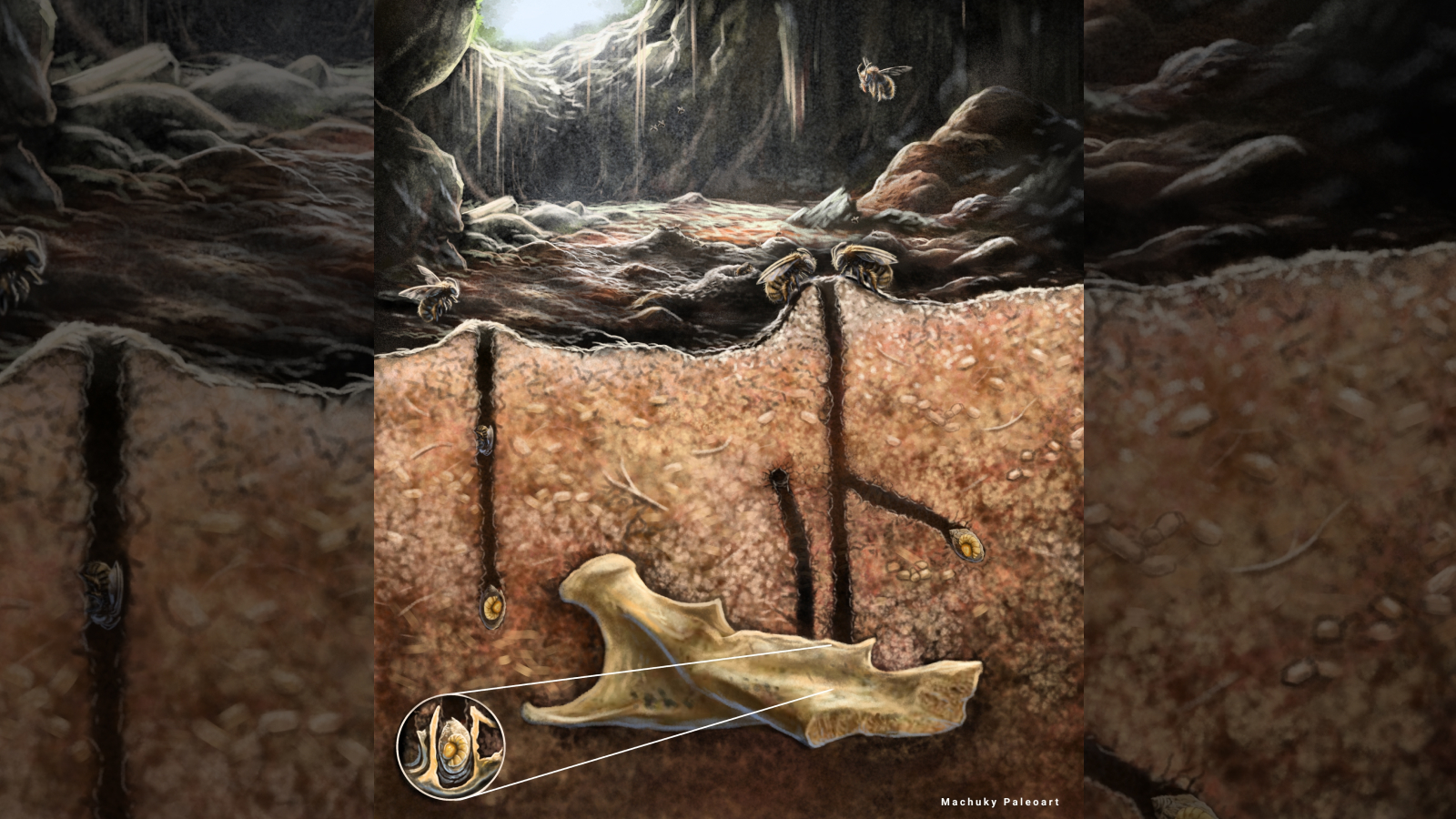Rare King David-Era Inscription Discovered in Biblical City

A 3,000-year-old ceramic jar discovered in pieces in Israel has been restored to reveal a rare inscription of the name of a biblical figure and ruler whose reign coincided with that of King David, archaeologists announced today (June 16).
The pottery was found in an ancient city overlooking the Valley of Elah, where, as described in the Bible, the legendary David defeated Goliath.
The inscription, the researchers found, read: Eshba'al Ben Bada', who the archaeologists say was likely an important person since his name was inscribed on a jar. (Eshba'al Ben Shaul ruled over Israel at the same time as King David during the first half of the 10th century B.C.) This newly deciphered inscription, along with three others from the same time period, suggest writing was more widespread in the Kingdom of Judah than previously thought, the archaeologists noted. [See Photos of the Biblical Inscription & Ancient City]
Israel archaeology
In 2012, researchers led by archaeologists Yosef Garfinkel and Saar Ganor were carrying out excavations at the biblical site Khirbet Qeiyafa— about 19 miles (30 kilometers) southwest of Jerusalem —when they found the jar, broken into hundreds of shards. The researchers' interest was piqued when they noticed letters written in ancient Canaanite on several of the pottery pieces.
After intense restoration work, in which scientists glued together the hundreds of shards, the jar is whole again, revealing the inscription.
Though this is the first time the name Eshba'al has been found on an ancient inscription from Israel, it does appear in the Bible (II Samuel, Chapters 3-4), where the biblical Eshba'al was murdered and decapitated by assassins, his head brought to David in Hebron, according to Garfinkel of the Institute of Archaeology at The Hebrew University in Jerusalem and Ganor of the Israel Antiquities Authority (IAA).
Get the world’s most fascinating discoveries delivered straight to your inbox.
The name was used only during the reign of David, the archaeologists point out. "This name was not used later in the First Temple period," Garfinkel and Ganor said in a statement. "The correlation between the biblical tradition and the archaeological finds indicates this was a common name only during that period. The name Beda' is unique and does not occur in ancient inscriptions or in the biblical tradition."
The researchers think the person, Eshba'al likely owned a large agricultural estate, where the produce was packed and transported inside jars bearing Eshba'al's name.
Biblical ruins
Garfinkel and Ganor have uncovered plenty of ruins at Khirbet Qeiyafa, including a fortified city dating to the time of David and overlooking the Valley of Elah, two gates, a palace and storeroom, and other dwellings.
In 2008, the team discovered the world's earliest Hebrew inscription written in ink on a trapezoid-shaped piece of pottery at the biblical site. That inscription reads:
1' you shall not do [it], but worship the [Lord]. 2' Judge the sla[ve] and the wid[ow] / Judge the orph[an] 3' [and] the stranger. [Pl]ead for the infant / plead for the po[or and] 4' the widow. Rehabilitate [the poor] at the hands of the king. 5' Protect the po[or and] the slave / [supp]ort the stranger.
Previously, archaeologists had associated Khirbet Qeiyafa with Sha'arayim (a biblical city whose name is translated as "two gates") due to the discovery of two gates in the ruins. Then, in 2010, scientists reported evidence suggesting the site was the city Neta'im, which was mentioned in the book of 1 Chronicles in the Hebrew Bible, or Old Testament.
"Until about five years ago we knew of no inscriptions dating to the tenth century BCE from the Kingdom of Judah. In recent years four inscriptions have been published: two from Khirbet Qeiyafa, one from Jerusalem and one from Bet Shemesh," Garfinkel and Ganor said in the IAA statement. "This completely changes our understanding of the distribution of writing in the Kingdom of Judah, and it is now clear that writing was far more widespread than previously thought."
Follow Jeanna Bryner on Twitter and Google+. Follow us @livescience, Facebook & Google+. Original article on Live Science.
Jeanna Bryner is managing editor of Scientific American. Previously she was editor in chief of Live Science and, prior to that, an editor at Scholastic's Science World magazine. Bryner has an English degree from Salisbury University, a master's degree in biogeochemistry and environmental sciences from the University of Maryland and a graduate science journalism degree from New York University. She has worked as a biologist in Florida, where she monitored wetlands and did field surveys for endangered species, including the gorgeous Florida Scrub Jay. She also received an ocean sciences journalism fellowship from the Woods Hole Oceanographic Institution. She is a firm believer that science is for everyone and that just about everything can be viewed through the lens of science.



